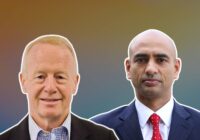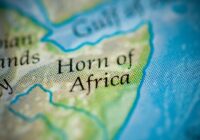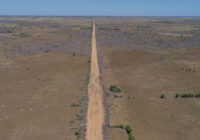Morocco has undergone an incredible transformation to support its intentions of becoming a commercial crossroads between Africa and the West, says former US Ambassador to Morocco Edward M. Gabriel.
In January 1998, I arrived in Morocco as the new US ambassador. Arriving at the end of Ramadan, I was able to immediately feel the warmth and character of the country, and it was the beginning of a close-up view of the changes going on in Morocco.
During my first meeting with King Hassan II, shortly after my arrival, he wasted no time in addressing Morocco’s agenda with the US, challenging me on our positions, especially the kingdom’s existential issue regarding sovereignty over the Sahara. This unexpected candid and warm exchange set the tone for regular meetings through my tenure during which concerns and grievances were voiced in private, rather than aired publicly. King Mohammed VI would continue this practice with me after his father’s death.
My first few months in the country also coincided with the beginning of the first government of Alternance, led by opposition leader Abderrahmane El Youssoufi — a watershed moment for Morocco that many political analysts mark as the beginning of significant democratic reform and economic liberalization after years of a strong-armed approach to governing and limited civil rights. Youssoufi, whose political activities had previously resulted in two years in jail and then 15 years of exile, became prime minister after his party, the Socialist Union of Popular Forces (USFP), won the most seats in the November 1997 elections. And since then, the international community has confirmed elections as occurring in a fair and transparent manner.
Two Decades Ago
In 1997, the unemployment rate in the country was 17% and growing, with youth making up a disproportionate percentage of the population. Women lacked equal rights with men. The percentage of the population living at or below the poverty line for lower middle-income countries was around 28%, and more than half of the entire adult population was illiterate, with rates among rural women much higher. Electricity in the country reached only around 60% of the population, and almost a quarter did not have access to potable water. Infant mortality rates were 23% higher than the regional average and maternal mortality ratios were nearly double. Overall, the micro-economic picture was in dire shape.
The economy was too dependent on agriculture, accounting for 20% of GDP and heavily reliant on rainfall. Infrastructure was lacking throughout the country, and environmental degradation was widely apparent throughout the cities and the countryside, presenting a challenge to the growth of tourism. Of particular note, the northern part of Morocco was completely neglected after a series of militant actions created an irreparable rift between King Hassan II and his citizens there.
In contrast to the micro economic indicators, by 1997 King Hassan II had established a strong macro-economic climate: low debt to GDP ratio, a low budget deficit and an open, competitive economic system. He adopted IMF and World Bank reforms that, had Morocco been a member of the European Union, would have qualified it for the monetary union.
Upon his death in 1999, King Hassan II left the country unified with a very strong nationalistic belief in country and king, a reasonably performing economy and, most importantly, with a solid commitment in its support for US objectives to fight terrorism.
Twenty years later, where is Morocco today? Where is it headed tomorrow?
Morocco Under King Mohammed VI
Upon ascending to the throne in 1999, King Mohammed VI immediately gave a clear indication of his vision for reform and equality for all Moroccans, stating in his first public speech in August 1999, “How can we talk about the progress and development of society when women who constitute half of this society are being denied their rights? Our true religion, Islam, has granted them rights that are not respected. They are equal to men.” By 2004, Morocco had passed one of the most progressive family codes in the region, the Moudawana, putting women on equal footing with men in regards to children and divorce.
 Also in 2004, King Mohammed VI established the Equity and Reconciliation Commission to reconcile victims of previous human rights abuses, providing a public forum for victims to make their case and receive compensation.
Also in 2004, King Mohammed VI established the Equity and Reconciliation Commission to reconcile victims of previous human rights abuses, providing a public forum for victims to make their case and receive compensation.
In 2005, a massive anti-poverty program, the National Initiative for Human Development, was instituted in 600 of the most vulnerable poor areas of the country and city districts to increase job creation and provide adequate social services for the most vulnerable of the population. The poverty rate in Morocco now stands at 15.5%, nearly a 50% reduction.
King Mohammed VI also took great efforts at rapprochement with the north of Morocco, indicating his intentions early on with his first official visit as king to Tangier, in September 1999 — the first visit by a monarch in nearly 40 years. These efforts have paid off. Rapprochement brought the establishment of economic zones, port and highway infrastructure, and tax incentives. With these and other measures, the north of Morocco has undergone an economic renaissance, and is now a hub for auto, aeronautics, and renewable energy manufacturing. And although youth unemployment is still problematic, the overall unemployment rate is now around 10.4%, nearly 40% less than it was in 1997.
Infant and maternal mortality rates have been cut in half. Electricity reaches 98.9% of the population and more than 85% have access to potable water. The birth rate is among the lowest in the region and is now comparable to rates in Europe. Morocco even has a new law that protects the civil liberties of migrants, making it one of the most progressive countries in the developing world on this issue. And today, while there is still work to be done, after concerted efforts Morocco has improved literacy among adults to around 70%, with rates reaching over 90% among youth, and even higher for those under 15 years old.
The cities are cleaner, with advances in waste collection and disposal. By 2030, Morocco aims to generate 50% of its electricity from renewable sources, making it a global leader on the environment. Tourism has increased five-fold since 1997.
The country has undergone an incredible transformation after years of serious efforts to modernize and expand its infrastructure, upgrading roads, ports, and airports to support its intentions of becoming a commercial crossroads between Africa and the West. In line with these efforts, Morocco and the US concluded a free trade agreement in 2004, and in 2017, Morocco reestablished its relationship with the African Union and many of its members following a 33-year absence.
Macro-economic rates, strong under King Hassan II, remain strong today. Agriculture still accounts for a large percentage of GDP at 13.6%, but that marks a 32% decrease from when King Mohammed VI assumed the throne, and a substantial amount of the production is now irrigated, reducing reliance on rain. New highways now connect most of the major cities in Morocco, and a new high speed train from Tangier to Casablanca will begin service in 2018, cutting travel time between the two cities by more than half to just over 2 hours.
The Sahara
When I arrived in Morocco, the bilateral relationship with the US was at a low point largely due to the lack of public support for Morocco on the Sahara issue. The United Nations was extending its MINURSO mandate overseeing the dispute for one or two months at a time, constantly prompting US criticism of Morocco regarding their differences on this issue.
As a result of discussions and agreement with Morocco in 1999, the United States proposed a political compromise to provide an internationally accepted framework of autonomy under Moroccan sovereignty. By 2007, the UN and the US were describing a new Moroccan sovereignty-autonomy initiative as serious, realistic and credible, and the US has since begun to fund Morocco to provide countrywide programs, services, and economic growth initiatives that include the Saharan regions. This, more than anything else, has solidified the relationship between our two countries during the past two decades.
Future of Morocco
Today, as I look back, I realize I’ve had a front row seat to Morocco’s internal and international evolution over the past 20 years. Morocco has come a long way, although more still needs to be done: addressing youth unemployment; improving education and creating jobs; tackling corruption and weaknesses with regard to the rule of law in both the public and private sectors; enforcement of existing laws; and dealing with ongoing government inefficiencies.
It is obvious that Morocco is moving steadily forward, albeit at its own pace. It is a delicate balancing act as the king moves cautiously to make Morocco a more open and modern leader among developing countries. Change that comes too quickly could expose vulnerabilities and create an opportunity for those who wish to destabilize the country, terrorists among them. On the other hand, too slow a pace could cause Moroccans to rise up and demand change at a more striking rate.
The US should be cognizant of this challenge and seize the opportunity to work in partnership with Morocco as it finds its “sweet spot” for movement and change, as it is in America’s interest to see this Arab country remain stable and grow increasingly more prosperous and democratic.
*[This article was originally published by Morocco on the Move.]
The views expressed in this article are the author’s own and do not necessarily reflect Fair Observer’s editorial policy.
Photo Credit: Morocko / Shutterstock.com
Support Fair Observer
We rely on your support for our independence, diversity and quality.
For more than 10 years, Fair Observer has been free, fair and independent. No billionaire owns us, no advertisers control us. We are a reader-supported nonprofit. Unlike many other publications, we keep our content free for readers regardless of where they live or whether they can afford to pay. We have no paywalls and no ads.
In the post-truth era of fake news, echo chambers and filter bubbles, we publish a plurality of perspectives from around the world. Anyone can publish with us, but everyone goes through a rigorous editorial process. So, you get fact-checked, well-reasoned content instead of noise.
We publish 2,500+ voices from 90+ countries. We also conduct education and training programs
on subjects ranging from digital media and journalism to writing and critical thinking. This
doesn’t come cheap. Servers, editors, trainers and web developers cost
money.
Please consider supporting us on a regular basis as a recurring donor or a
sustaining member.
Will you support FO’s journalism?
We rely on your support for our independence, diversity and quality.






